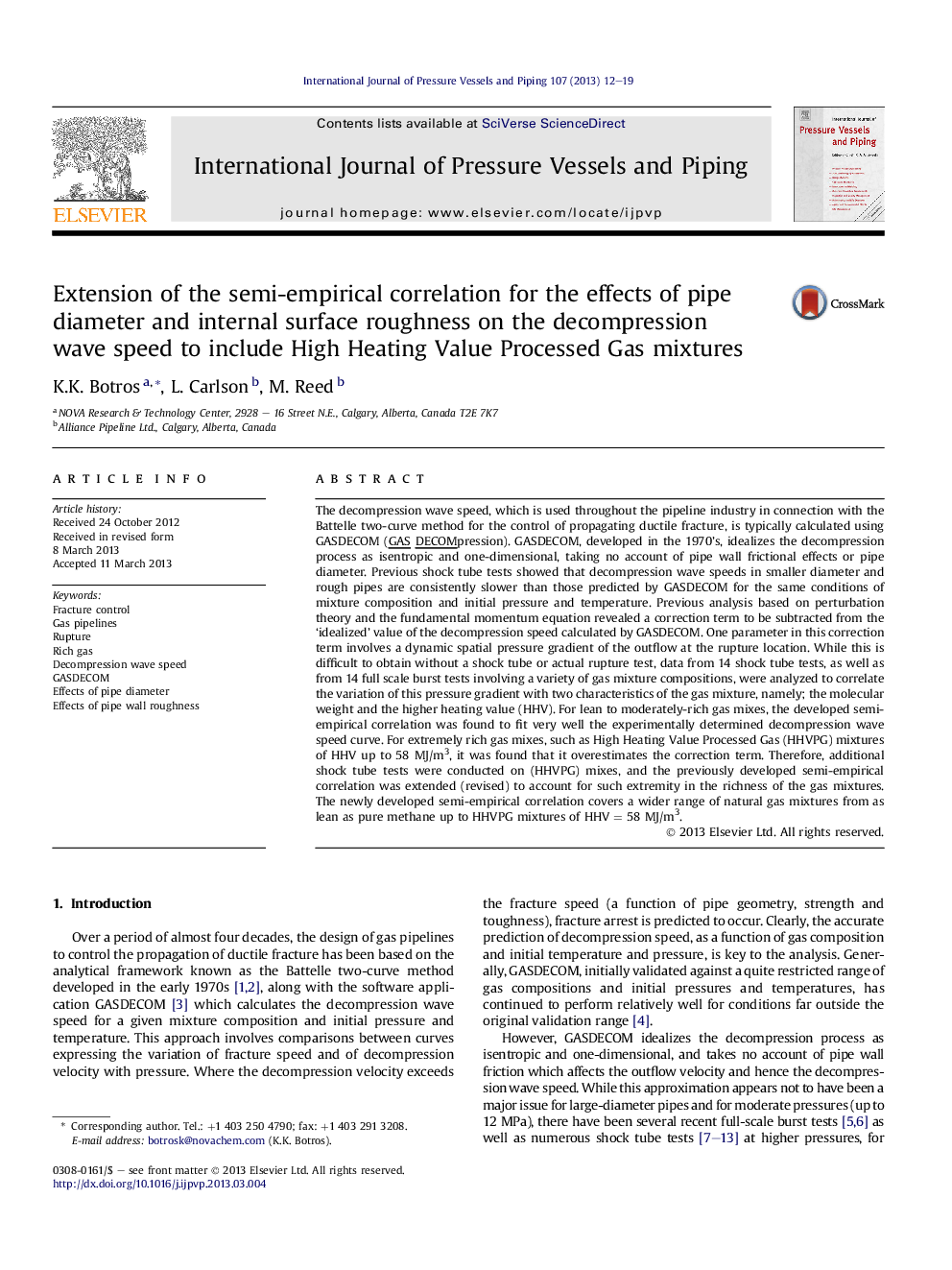| Article ID | Journal | Published Year | Pages | File Type |
|---|---|---|---|---|
| 787387 | International Journal of Pressure Vessels and Piping | 2013 | 8 Pages |
The decompression wave speed, which is used throughout the pipeline industry in connection with the Battelle two-curve method for the control of propagating ductile fracture, is typically calculated using GASDECOM (GASDECOMpression). GASDECOM, developed in the 1970's, idealizes the decompression process as isentropic and one-dimensional, taking no account of pipe wall frictional effects or pipe diameter. Previous shock tube tests showed that decompression wave speeds in smaller diameter and rough pipes are consistently slower than those predicted by GASDECOM for the same conditions of mixture composition and initial pressure and temperature. Previous analysis based on perturbation theory and the fundamental momentum equation revealed a correction term to be subtracted from the ‘idealized’ value of the decompression speed calculated by GASDECOM. One parameter in this correction term involves a dynamic spatial pressure gradient of the outflow at the rupture location. While this is difficult to obtain without a shock tube or actual rupture test, data from 14 shock tube tests, as well as from 14 full scale burst tests involving a variety of gas mixture compositions, were analyzed to correlate the variation of this pressure gradient with two characteristics of the gas mixture, namely; the molecular weight and the higher heating value (HHV). For lean to moderately-rich gas mixes, the developed semi-empirical correlation was found to fit very well the experimentally determined decompression wave speed curve. For extremely rich gas mixes, such as High Heating Value Processed Gas (HHVPG) mixtures of HHV up to 58 MJ/m3, it was found that it overestimates the correction term. Therefore, additional shock tube tests were conducted on (HHVPG) mixes, and the previously developed semi-empirical correlation was extended (revised) to account for such extremity in the richness of the gas mixtures. The newly developed semi-empirical correlation covers a wider range of natural gas mixtures from as lean as pure methane up to HHVPG mixtures of HHV = 58 MJ/m3.
